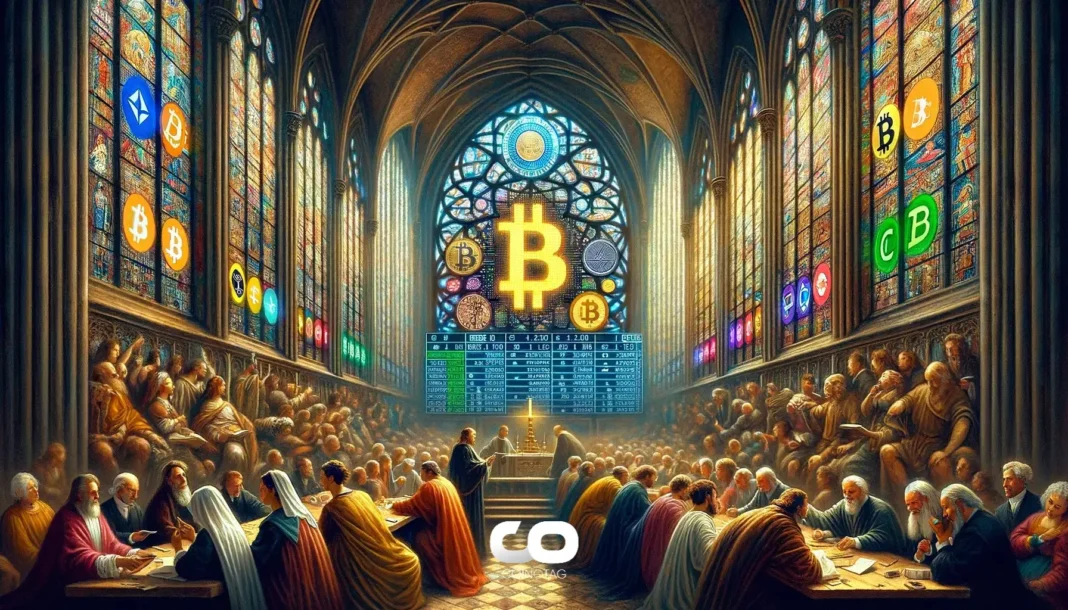- The recent decision by the U.S. Supreme Court to overturn the Chevron doctrine has added complexity to the cryptocurrency regulation landscape.
- On Monday, TD Cowen announced that the court nullified the 40-year-old precedent, which allowed federal agencies to interpret laws, in a 6-3 vote.
- Crypto proponents view this decision as a potential advantage for the industry, suggesting that regulatory bodies like the Securities and Exchange Commission (SEC) may need to tread more carefully in the future.
The U.S. Supreme Court’s ruling on the Chevron doctrine could significantly impact the cryptocurrency sector, potentially altering the regulatory landscape and affecting future SEC policies.
Supreme Court’s Decision and Its Implications
The repeal of the Chevron doctrine marks a significant shift in the regulatory framework, potentially restricting the power of federal agencies. This might have considerable implications for the cryptocurrency industry, which has been under intense scrutiny from regulatory bodies like the SEC. According to TD Cowen’s Washington Research Group, while the ruling could aid future challenges to SEC rules and enforcement actions, it does not retroactively alter past decisions.
Crypto Community’s Perspective
Many within the cryptocurrency community have welcomed the Supreme Court’s ruling, viewing it as a victory that might constrain regulatory overreach. This viewpoint posits that the ruling could force regulatory agencies to be more precise and transparent when drafting new rules, thereby reducing the ambiguity that has often plagued the crypto regulatory environment. However, this newfound clarity could also mean that legislators will have to articulate more specific guidelines concerning what constitutes a security or a commodity, and the particular nuances involved in crypto trading platforms and staking programs.
Impact on Legislative and Regulatory Procedures
The decision complicates legislative efforts aimed at regulating cryptocurrencies and stablecoins. For instance, the House of Representatives’ recently passed Financial Innovation and Technology for the 21st Century Act (FIT21), which received bipartisan support, now faces additional challenges. Lawmakers must now consider how to provide clear regulatory directives without the fallback option of relying on regulatory interpretation. This could potentially slow down the legislative process and introduce more detailed scrutiny of the specific language used in the bills.
Political Strategy and Congressional Accountability
TD Cowen’s Research Group head, Jaret Seiberg, highlights that the overturn of the Chevron doctrine disrupts common bipartisan strategies where lawmakers deliberately left language ambiguous, deferring decision-making to regulatory bodies. This strategy allowed Congress members to later criticize regulatory agencies if the outcomes were unfavorable. With the Supreme Court’s new stance, such tactics will likely lose effectiveness, necessitating more explicit legislative guidelines.
Future Outlook and Industry Challenges
This ruling introduces a new layer of complexity to an already intricate legal landscape surrounding cryptocurrencies and stablecoins. Questions about what constitutes a security, the specifics of anti-money laundering (AML) and Bank Secrecy Act (BSA) controls, and how they apply to various crypto transactions now require legislative clarity. The increased judicial scrutiny means that both legislators and regulators must ensure their directives withstand rigorous legal examination.
Conclusion
The Supreme Court’s decision to overturn the Chevron doctrine could have far-reaching implications for the cryptocurrency industry. By requiring more precise legislative language and reducing the interpretative leeway of regulatory agencies, this ruling might foster a more transparent and predictable regulatory environment. However, it also poses challenges, necessitating detailed legislative efforts and likely leading to a more complex and scrutinized regulatory process.







